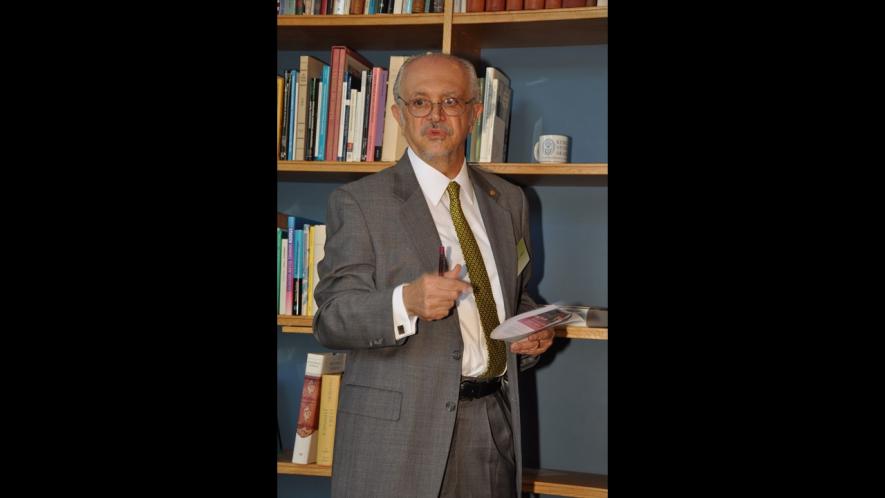Remembering Mario Molina, Who Warned about Ozone Layer Depletion by CFC

Image Courtesy: Wikimedia Commons
There’s a thin gaseous layer that lies between the troposphere, where we live, and the stratosphere, which filters out over 99% of the harmful ultraviolet light coming from the sun before it reaches us. Yes, we are talking about the ozone layer. By now, it is known how UV light can harm us and how important the ozone layer is. It also known that certain materials like the chlorofluorocarbon (CFC) can deplete the ozone layer.
But, think about the situation about half a century ago. Humanity was completely in the dark about the unfolding of a catastrophe in the upper atmosphere. That time, CFC was in widespread use, mainly in the form of refrigerant gas or aerosol propellant, silently killing the UV protective layer in the upper atmosphere.
It was in 1974, when a Mexican chemist, Mario Molina, along with Frank Sherwood Rowland, published a paper in the journal, Nature, where they showed how CFC was silently killing the ozone layer. Molina became the first Mexican to win a Nobel prize in 1995 for his seminal work on CFC’s harmful impact on the ozone layer. Molina and Rowland’s paper was a landmark and paved the way to save humans from further depleting the ozone layer.
Molina, a seminal figure in the ozone layer depletion study, died of a heart attack at the age of 77 on October 7, 2020. He was MIT Professor Emeritus.
Molina and his colleagues’ work had strength of science, but it took more than a decade before their work was recognised fully and was acted upon to save the ozone layer. First, the chemical industry lambasted their work. Then it was NASA which reported that their data showed signs of no ozone layer depletion. It was the work of a team at the British Antarctic Survey, led by Joe Farman, which reported about the opening of a vast hole in the ozone layer at the South Pole. This was published in Nature in 1985, eleven years after Molina and his colleagues’ finding.
Humanity was lucky in a sense that the discovery was made just in time, as the rate at which the ozone layer was getting destructed in mid-80s, it could have been damaged to a level of beyond repair.
The ozone layer is now healing and it is expected that the layer would be fully repaired by 2080. Thanks to Molina’s work, not only in discovering the science behind the depletion, but also in playing a proactive role in the formulation of an international treaty that wiped out the use of CFC and other materials.
In 1987, the Montreal Protocol was signed to phase out CFC. Molina was behind the drafting of the Protocol, which is one of the most successful international efforts in fighting climate change and environmental degradation.
Molina’s work also helped in averting another potential danger for the climate. Many chemicals used as substitute to CFC are powerful greenhouse gases and could cause warming many times greater than carbon dioxide. Recently, the Montreal Protocol was amended, known as the Kigali amendment to Montreal Protocol that phased out some hundreds of such harmful materials.
Durwood Zaelke, an environmental lawyer who worked with Molina in various capacities in pressuring governments to take action against climate change, said in his remembrance —“The Montreal protocol solved the first great threat to the global atmosphere, and has done more to solve the next threat – the climate threat – than any other agreement, including the Paris Agreement. Phasing down CFCs and related fluorinated gases has avoided more climate warming than carbon dioxide is causing today. Mario remained deeply involved until his last days.”
Get the latest reports & analysis with people's perspective on Protests, movements & deep analytical videos, discussions of the current affairs in your Telegram app. Subscribe to NewsClick's Telegram channel & get Real-Time updates on stories, as they get published on our website.















